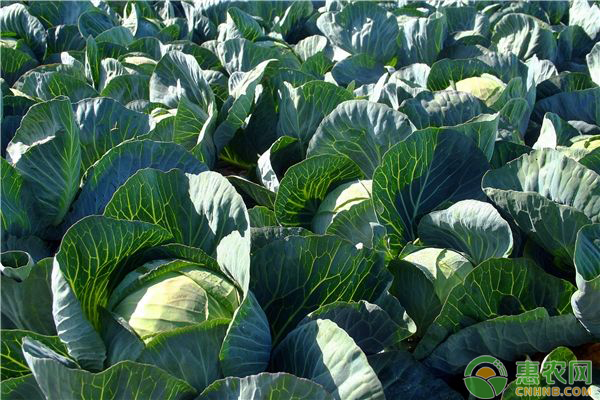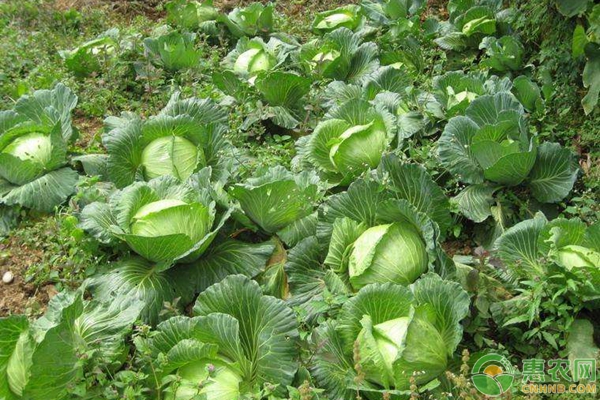At present, consumers' pursuit of quality vegetables is growing, including commodity, food, nutritional quality and safety. Therefore, cabbage, which is rich in nutrients such as Vc and sulforaphane, has increased demand for the market. Let's take a look at the facility cultivation techniques of “sweetness 55†of fruit cabbage.

First, the characteristics of the characteristics
“Sweet Flavor 55†is a new breed of beef heart-shaped fruit cabbage that is suitable for raw food cultured by Jiangsu Academy of Agricultural Sciences. It was approved by Jiangsu Province in 2016 (Su Jian Ganlan 201511). "Sweetness 55" is of excellent quality. The raw food tastes crisp and sweet, the stir-fried color is green and crispy, the plant is semi-erect, the growth potential is strong, the development degree is about 50 cm, the leaf edge is not nicked, the leaves are thick, the wax powder is deep, the leaf is deep. Green, single ball weighs 0.75~1.25 kg. It has been tested and planted all over the country, showing strong growth potential, good consistency, tight leaf ball, good commodity quality, strong ability to withstand low temperature and low light, and is very popular among consumers and growers. It is suitable for cultivation in spring and autumn in all parts of the country, and cultivated in winter and spring, with a yield of 667 square meters of 3,000-4,000 kg.
Second, cultivate strong seedlings
2.1 timely seeding
Winter and spring cultivation should be sown in greenhouses (or solar greenhouses). The sowing time is from early November to early December (or can be postponed to late January according to harvest period). Because winter temperature is low, seedling age needs 40~50 days, usually planted in late December in mid-January (planted in late January to early March, can be planted directly in the open field), and listed from late February to early March (planted from January to early May). It can be adjusted before the Spring Festival by adjusting the planting period, supplementing the vegetable market to supply the off-season and increasing economic benefits.
2.2 Sowing
There are two ways of seedling raising: seedling seedling raising and seedling raising. Seedbed seedlings, seedbeds generally choose a higher terrain, convenient drainage and irrigation, made 1.5 meters wide, no more than 20 meters long, the seedling bed water before planting. Sowing by sowing, strip or on-demand. For the sowing, the ditch can be ditched by 5~8 cm, the seeding is planted at 3 g/m2, and the seeding is carried out with 2~3 seeds per 5 cm3 of nutritious soil. After sowing, evenly cover a layer of fine soil or matrix of 0.2~0.3 cm, and water the soil to moisten the soil without knotting. Generally, the seedlings can be removed in 4 days, and the coverings on the surface of the clams are removed; the seedlings are seeded, and the seedling substrate and the seedling tray are directly purchased. The substrate is mixed with water before sowing, and the water is not dripped, and then the tray is placed on the tray. Gently press a small pit of 0.1 cm deep, ready for seed placement, can be directly on-demand or planter sowing (large area can be selected with a seeder), post-planting treatment and management of seedling bed seedlings. Seedling seedlings use a large amount of seeds, 667 square meters to 50 grams, seedlings seedlings 667 square meters with only about 30 grams of seed.
2.3 Seedling management
In the initial stage of sowing, water management is important. Before the emergence of seedlings, the soil or substrate is moistened. After emergence, seedling beds and trays are sprayed every day to ensure that there is no dry-out phenomenon. In about 10 days, water can be watered every other day. One week before planting, start water control, and water once every 2~3 days, which is good for seedlings after planting. At the seedling stage, pay attention to proper amount of watering. It can be poured less times, not only to prevent the air humidity in the shed, but also to prevent the disease caused by the excessive humidity of the bed soil and the length of the seedlings, or the dead soil caused by the bed soil. After sowing, the temperature should not exceed 30 °C during the day, the optimum temperature is 20~25°C, the nighttime is 10~15°C, and the seedlings are released within 3~5 days. After the seedlings, the daytime temperature should not be too high, to prevent the length, temperature 15~25°C, night 5~ 15 ° C can be. Qimao about 10 days, observe the growth of seedlings, such as sowing seedlings, seedlings can use soil nutrition, the whole seedling period does not need fertilizer, such as seeding, seedlings for about 15 days, observe leaf color, leaf color, leafy Spray compound fertilizer leachate (2‰~5‰), and continue to apply compound fertilizer according to the growth of seedlings. Seedlings and weeding are needed about 10 days after sowing. In the seedling stage, there is basically no need to prevent rickets, blight, and reduce pesticide residues. The seedling period is 40~50 days, and 4~6 pieces of true leaves can be transplanted and planted.

Third, colonization
Before planting, ploughing and drying the greenhouse soil, applying 1500~2000 kg/667 square meters of farmyard manure as the base fertilizer, then turning the soil to the vertical direction of the greenhouse. Generally, the width of the seedling bed is 1~1.5 m or 2 m wide, and the ditch depth and width are wide. Both are 0.3 meters. Before planting, the seedlings are subjected to low temperature exercise for about one week. The row spacing of planting density is 25~30 cm square, and 5000~6000 plants are planted per acre. It can also be intercropped with fruits and vegetables with longer growth cycle, and the planting density is determined according to actual conditions. . The suitable planting period in North China is around mid-March, and Henan and Shandong are around mid-February. Generally, when the temperature of the topsoil in the shed reaches 5 °C or above, it can be selected in the cold and sunny days when the cold current is over and the warming begins.
Planting with soil or substrate can help to slow the growth of seedlings and plants. On the day of planting, the seedling water was poured and the seedlings were picked up. When planting, the load is lightly pressed, and it is better to expose the cotyledons to the ground.
Fourth, field management
4.1 Temperature Management
The key technology for winter and spring conservation cultivation is to control the temperature, humidity and ground temperature in the greenhouse to accelerate the growth of cabbage. 10 days after planting, there is no wind (the temperature needs to be lower than 30 °C), and the ventilation starts from the beginning of the growth of the seedlings. The vents are kept from small to large, so that the temperature in the shed is maintained at 15~25 °C to achieve nutrient consumption and accumulation. Balance between supply and demand, promote the smooth formation of cabbage, if long-term maintenance above 25 °C, the nutrients produced by photosynthesis can not meet the consumption of respiration of plants at high temperatures, the higher the temperature, the higher the consumption, in order to increase the photosynthetic production of nutrients The area will lead to loose balls; if the temperature is too low, photosynthesis will weaken, plants will grow slowly, and even stop growing. The room temperature should not exceed 30 °C during the day. During the day, the cotton jacket can control the temperature, supplement the light, and cover the cotton jacket at night to keep warm.
4.2 Fertilizer management
After planting, appropriate seedlings are planted, then watered and ploughed to promote root development. After most plants enter the rosette stage, they are irrigated in water for 2~3 times. At this time, they should be topdressed with water, mainly applying compound fertilizer with high specific gravity of N fertilizer. After every 10~15 days, water is poured once every 2~3 times, and after the balling period, it is necessary to topdress one time. Each time the watering is to be carried out on a sunny day, the amount of water can be slightly larger, but it should not be flooded. If the humidity of the protection ground is too high, the humidity can be reduced by releasing the air. After the temperature rises in the morning, the wind can be released, and the small-large-small mode can be adopted in one day. The fertilizer and water management of fruit cabbage is relatively strict. It is best to apply less or no chemical fertilizer to improve the quality of the leaf ball.
4.3 Pest Control
In the winter and spring season, the cultivation of cabbage in the whole growth period is less affected by external environmental factors than the open field cultivation, so there are fewer pests and diseases. Common diseases in cultivation include black rot, root rot, black spot, soft rot, etc. In order to reduce pesticide residues, the disease is mainly prevented, and the indoor humidity is reduced by releasing the wind. For example, 70% chlorothalonil can be used. Zinc wettable powder and 50% root disease (Fumei double) wettable powder and other fungicidal drugs are rotated and used, with good control effect. For cabbage cabbage, small green worm, beet armyworm, etc., set yellow plate to trap aphids, use black light to trap pests, absolutely prohibit the use of highly toxic and highly toxic pesticides, followed by biological control, 10 billion live spores / bacterium Bacillus thuringiensis wettability Powder, spray 100~300g per acre with 50~60kg of water; or spray with 1 billion live spores/gram of chlorpyrifos powder 1000 times; or dilute to 10 billion live spores/gram of chlorpyrifos WP with water ~1500 times liquid spray. One of the above medicinal agents is used to spray at the initial stage of the pest, spray once every 7 to 10 days, and spray continuously for 2 to 3 times. If the disease in the field cannot be controlled, the chemical control of the vegetable can use 90% crystal trichlorfon 1000~1500 times liquid, 20% kill polyester 3000 times liquid, 2.5% deltamethrin EC 3000~4000 times liquid and so on. Do not use medicine 10 days before harvest, and water once a week before harvest.

V. Harvest
According to the growth of cabbage and market demand, when the size of the leaf ball is fixed and the firmness reaches 80%, the single sweetness of the listed “sweet 55†can be as high as 0.75~1.25 kg. Keep 1~2 rounds of outer leaves when harvesting to prevent mechanical damage and pathogen invasion. According to the market price, if the ball has not been split, it can be listed 2 to 5 days later. Under suitable temperature and good management conditions, each leaf ball can gain 40~50 grams per day, increase production and increase production value. The cabbage leaf ball can be harvested by the strainer, buffering the time to market and increasing the yield.
Industry Microscope,Industrial Stereo Microscope,Industrial Digital Microscope,Measuring Microscope
Ningbo ProWay Optics & Electronics Co., Ltd. , https://www.proway-microtech.com